Need Cover Letter Help
Struggling with your cover letter? Discover expert tips and resources to create a compelling cover letter that catches employers’ attention. Learn how to structure, write, and customize your cover letter for any job application.
1000+ Reviews on Trustpilot
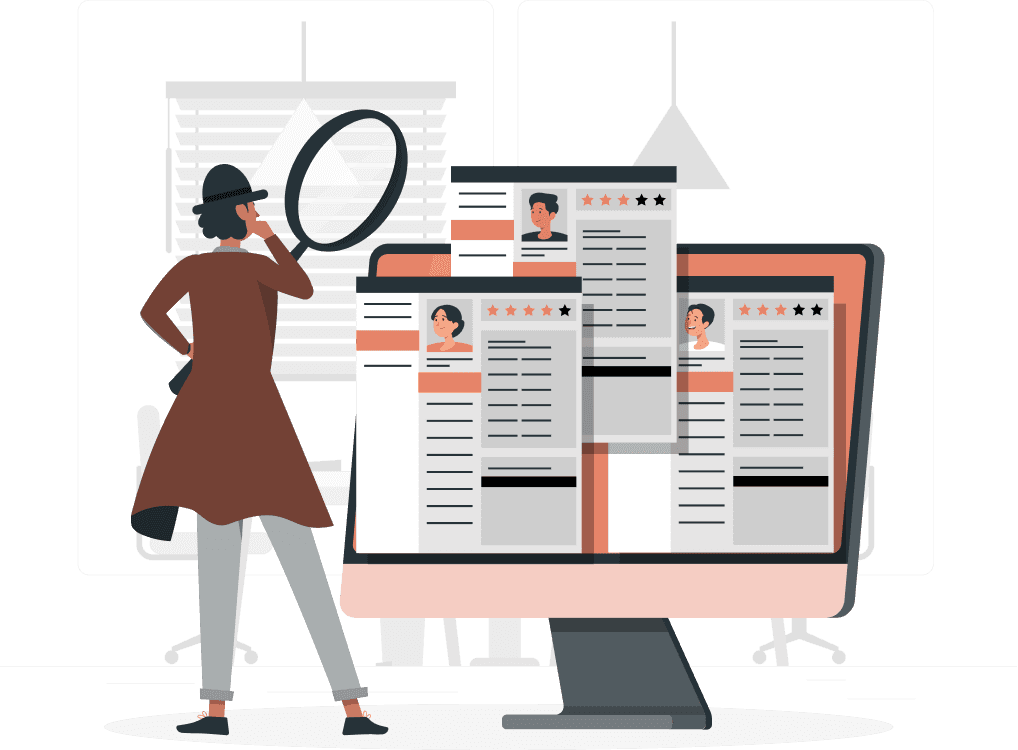
Need Cover Letter Help
Struggling with your cover letter? Discover expert tips and resources to create a compelling cover letter that catches employers’ attention. Learn how to structure, write, and customize your cover letter for any job application.
1000+ Reviews on Trustpilot

Need Cover Letter Help
Struggling with your cover letter? Discover expert tips and resources to create a compelling cover letter that catches employers’ attention. Learn how to structure, write, and customize your cover letter for any job application.
1000+ Reviews on Trustpilot

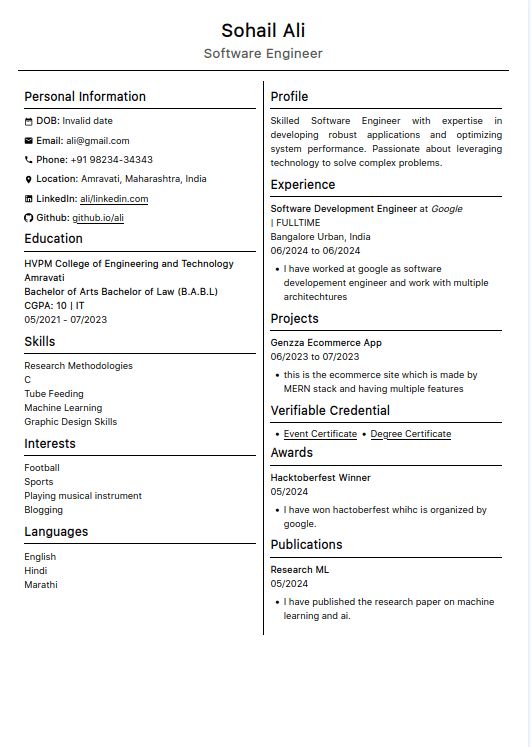
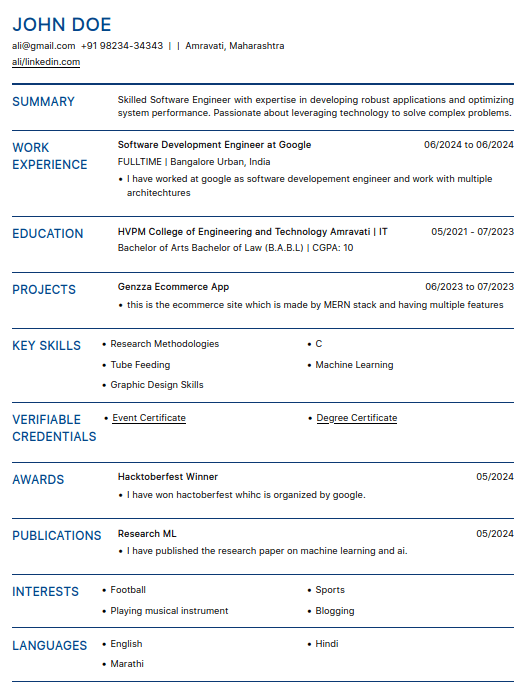
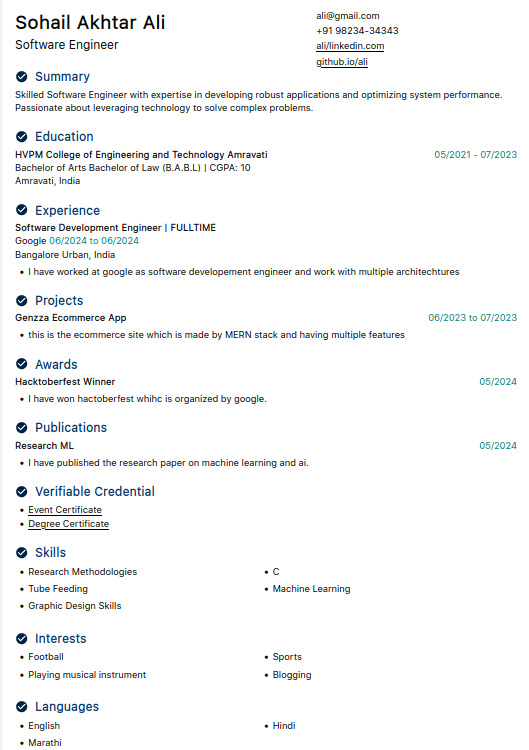
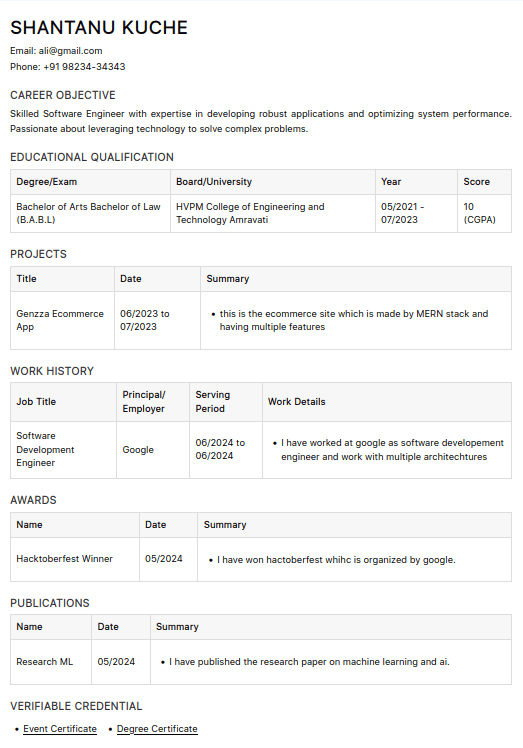
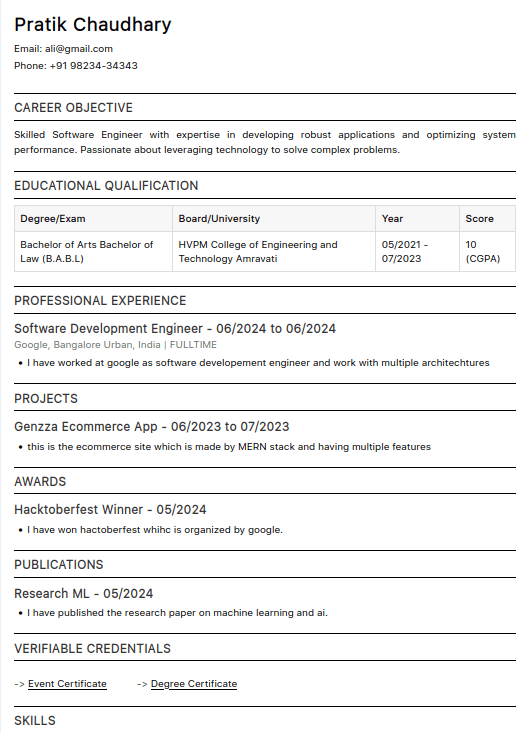
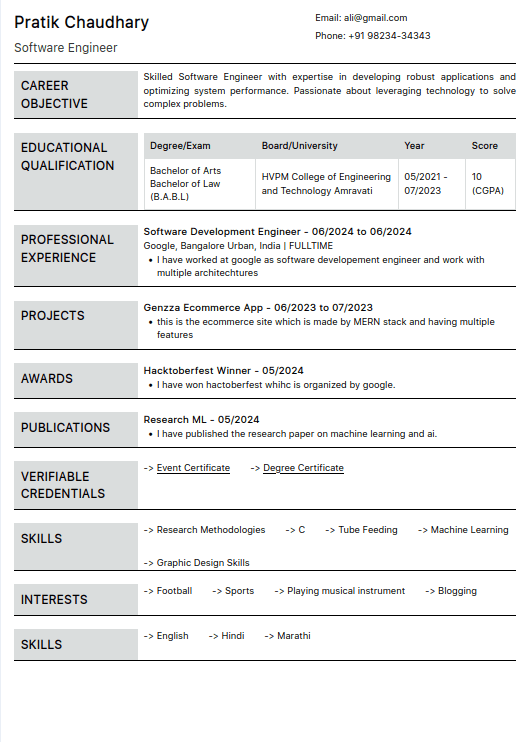












A cover letter is your first opportunity to make a personal connection with a potential employer. It’s more than just a formality—it's your chance to demonstrate your enthusiasm for the position, showcase your communication skills, and explain why you’re the perfect fit for the job. However, crafting a cover letter that stands out can be challenging.
This article provides expert tips, advice, and resources to help you write a compelling cover letter that enhances your job application and increases your chances of landing an interview.
A cover letter is your first opportunity to make a personal connection with a potential employer. It’s more than just a formality—it's your chance to demonstrate your enthusiasm for the position, showcase your communication skills, and explain why you’re the perfect fit for the job. However, crafting a cover letter that stands out can be challenging.
This article provides expert tips, advice, and resources to help you write a compelling cover letter that enhances your job application and increases your chances of landing an interview.
A cover letter is your first opportunity to make a personal connection with a potential employer. It’s more than just a formality—it's your chance to demonstrate your enthusiasm for the position, showcase your communication skills, and explain why you’re the perfect fit for the job. However, crafting a cover letter that stands out can be challenging.
This article provides expert tips, advice, and resources to help you write a compelling cover letter that enhances your job application and increases your chances of landing an interview.
1. Understanding the Purpose of a Cover Letter
A cover letter serves as an introduction to your resume and a way to personalize your job application. Unlike a resume, which focuses on your past experiences and skills, a cover letter allows you to explain how your background aligns with the specific job you’re applying for. Here’s why a strong cover letter is essential:
Personal Connection: A cover letter provides a chance to address the hiring manager directly, creating a personal connection that can make your application more memorable.
Showcasing Communication Skills: Your cover letter demonstrates your ability to communicate effectively, a critical skill in almost every job.
Highlighting Key Qualifications: You can use your cover letter to highlight the most relevant aspects of your resume and explain why they make you the best candidate for the job.
1. Understanding the Purpose of a Cover Letter
A cover letter serves as an introduction to your resume and a way to personalize your job application. Unlike a resume, which focuses on your past experiences and skills, a cover letter allows you to explain how your background aligns with the specific job you’re applying for. Here’s why a strong cover letter is essential:
Personal Connection: A cover letter provides a chance to address the hiring manager directly, creating a personal connection that can make your application more memorable.
Showcasing Communication Skills: Your cover letter demonstrates your ability to communicate effectively, a critical skill in almost every job.
Highlighting Key Qualifications: You can use your cover letter to highlight the most relevant aspects of your resume and explain why they make you the best candidate for the job.
1. Understanding the Purpose of a Cover Letter
A cover letter serves as an introduction to your resume and a way to personalize your job application. Unlike a resume, which focuses on your past experiences and skills, a cover letter allows you to explain how your background aligns with the specific job you’re applying for. Here’s why a strong cover letter is essential:
Personal Connection: A cover letter provides a chance to address the hiring manager directly, creating a personal connection that can make your application more memorable.
Showcasing Communication Skills: Your cover letter demonstrates your ability to communicate effectively, a critical skill in almost every job.
Highlighting Key Qualifications: You can use your cover letter to highlight the most relevant aspects of your resume and explain why they make you the best candidate for the job.
2. Getting Started: Cover Letter Basics
Before diving into writing, it’s important to understand the basic structure of a cover letter. Here’s a breakdown of the essential elements:
Header: Include your contact information, the date, and the employer’s contact information. This section ensures your cover letter is properly addressed and provides the necessary details for follow-up.
Salutation: Whenever possible, address your cover letter to a specific person, such as the hiring manager. If the name is unknown, use a general but professional greeting like “Dear Hiring Manager.”
Introduction: Start with a strong opening that grabs the reader’s attention. Mention the job you’re applying for and briefly introduce why you’re interested in the position.
Body: The body of your cover letter should be one to three paragraphs long and should focus on your qualifications, experience, and how they align with the job requirements. Highlight key accomplishments and skills that make you an ideal candidate.
Conclusion: End with a closing paragraph that reiterates your interest in the role, thanks the reader for their time, and invites them to contact you for an interview.
Signature: Use a professional closing phrase, followed by your name. If submitting a printed copy, leave space for a handwritten signature above your typed name.
Example Structure:
Jane Doe
123 Main Street
City, State 12345
jane.doe@email.com
(555) 555-5555
August 23, 2024
John Smith
Hiring Manager
XYZ Corporation
456 Business Avenue
City, State 67890
Dear Mr. Smith,
I am writing to express my interest in the Marketing Manager position at XYZ Corporation, as advertised on your company’s website. With over seven years of experience in digital marketing and a proven track record of driving growth, I am confident in my ability to contribute to your team’s success.
In my current role at ABC Company, I have successfully led multiple marketing campaigns that resulted in a 30% increase in online sales. My expertise in social media strategy, content creation, and data analysis aligns well with the needs of XYZ Corporation. I am particularly drawn to your company’s innovative approach to marketing and commitment to sustainability, and I would welcome the opportunity to contribute to your continued success.
Thank you for considering my application. I look forward to the possibility of discussing how my experience and skills can benefit XYZ Corporation. Please feel free to contact me at your earliest convenience to arrange an interview.
Sincerely,
Jane Doe
2. Getting Started: Cover Letter Basics
Before diving into writing, it’s important to understand the basic structure of a cover letter. Here’s a breakdown of the essential elements:
Header: Include your contact information, the date, and the employer’s contact information. This section ensures your cover letter is properly addressed and provides the necessary details for follow-up.
Salutation: Whenever possible, address your cover letter to a specific person, such as the hiring manager. If the name is unknown, use a general but professional greeting like “Dear Hiring Manager.”
Introduction: Start with a strong opening that grabs the reader’s attention. Mention the job you’re applying for and briefly introduce why you’re interested in the position.
Body: The body of your cover letter should be one to three paragraphs long and should focus on your qualifications, experience, and how they align with the job requirements. Highlight key accomplishments and skills that make you an ideal candidate.
Conclusion: End with a closing paragraph that reiterates your interest in the role, thanks the reader for their time, and invites them to contact you for an interview.
Signature: Use a professional closing phrase, followed by your name. If submitting a printed copy, leave space for a handwritten signature above your typed name.
Example Structure:
Jane Doe
123 Main Street
City, State 12345
jane.doe@email.com
(555) 555-5555
August 23, 2024
John Smith
Hiring Manager
XYZ Corporation
456 Business Avenue
City, State 67890
Dear Mr. Smith,
I am writing to express my interest in the Marketing Manager position at XYZ Corporation, as advertised on your company’s website. With over seven years of experience in digital marketing and a proven track record of driving growth, I am confident in my ability to contribute to your team’s success.
In my current role at ABC Company, I have successfully led multiple marketing campaigns that resulted in a 30% increase in online sales. My expertise in social media strategy, content creation, and data analysis aligns well with the needs of XYZ Corporation. I am particularly drawn to your company’s innovative approach to marketing and commitment to sustainability, and I would welcome the opportunity to contribute to your continued success.
Thank you for considering my application. I look forward to the possibility of discussing how my experience and skills can benefit XYZ Corporation. Please feel free to contact me at your earliest convenience to arrange an interview.
Sincerely,
Jane Doe
2. Getting Started: Cover Letter Basics
Before diving into writing, it’s important to understand the basic structure of a cover letter. Here’s a breakdown of the essential elements:
Header: Include your contact information, the date, and the employer’s contact information. This section ensures your cover letter is properly addressed and provides the necessary details for follow-up.
Salutation: Whenever possible, address your cover letter to a specific person, such as the hiring manager. If the name is unknown, use a general but professional greeting like “Dear Hiring Manager.”
Introduction: Start with a strong opening that grabs the reader’s attention. Mention the job you’re applying for and briefly introduce why you’re interested in the position.
Body: The body of your cover letter should be one to three paragraphs long and should focus on your qualifications, experience, and how they align with the job requirements. Highlight key accomplishments and skills that make you an ideal candidate.
Conclusion: End with a closing paragraph that reiterates your interest in the role, thanks the reader for their time, and invites them to contact you for an interview.
Signature: Use a professional closing phrase, followed by your name. If submitting a printed copy, leave space for a handwritten signature above your typed name.
Example Structure:
Jane Doe
123 Main Street
City, State 12345
jane.doe@email.com
(555) 555-5555
August 23, 2024
John Smith
Hiring Manager
XYZ Corporation
456 Business Avenue
City, State 67890
Dear Mr. Smith,
I am writing to express my interest in the Marketing Manager position at XYZ Corporation, as advertised on your company’s website. With over seven years of experience in digital marketing and a proven track record of driving growth, I am confident in my ability to contribute to your team’s success.
In my current role at ABC Company, I have successfully led multiple marketing campaigns that resulted in a 30% increase in online sales. My expertise in social media strategy, content creation, and data analysis aligns well with the needs of XYZ Corporation. I am particularly drawn to your company’s innovative approach to marketing and commitment to sustainability, and I would welcome the opportunity to contribute to your continued success.
Thank you for considering my application. I look forward to the possibility of discussing how my experience and skills can benefit XYZ Corporation. Please feel free to contact me at your earliest convenience to arrange an interview.
Sincerely,
Jane Doe
3. Common Cover Letter Mistakes and How to Avoid Them
Even a well-written cover letter can be undermined by common mistakes. Here are some pitfalls to watch out for:
Generic Content: Avoid using a one-size-fits-all cover letter. Customize your letter for each job application to show that you’re genuinely interested in the position.
Rehashing Your Resume: Your cover letter should complement your resume, not repeat it. Use the letter to provide context, explain gaps, or highlight specific achievements that align with the job.
Length: Keep your cover letter concise. Ideally, it should be no longer than one page. Hiring managers appreciate brevity and clarity.
Spelling and Grammar Errors: Proofread your cover letter carefully. Errors can make you appear careless and may cost you the job.
3. Common Cover Letter Mistakes and How to Avoid Them
Even a well-written cover letter can be undermined by common mistakes. Here are some pitfalls to watch out for:
Generic Content: Avoid using a one-size-fits-all cover letter. Customize your letter for each job application to show that you’re genuinely interested in the position.
Rehashing Your Resume: Your cover letter should complement your resume, not repeat it. Use the letter to provide context, explain gaps, or highlight specific achievements that align with the job.
Length: Keep your cover letter concise. Ideally, it should be no longer than one page. Hiring managers appreciate brevity and clarity.
Spelling and Grammar Errors: Proofread your cover letter carefully. Errors can make you appear careless and may cost you the job.
3. Common Cover Letter Mistakes and How to Avoid Them
Even a well-written cover letter can be undermined by common mistakes. Here are some pitfalls to watch out for:
Generic Content: Avoid using a one-size-fits-all cover letter. Customize your letter for each job application to show that you’re genuinely interested in the position.
Rehashing Your Resume: Your cover letter should complement your resume, not repeat it. Use the letter to provide context, explain gaps, or highlight specific achievements that align with the job.
Length: Keep your cover letter concise. Ideally, it should be no longer than one page. Hiring managers appreciate brevity and clarity.
Spelling and Grammar Errors: Proofread your cover letter carefully. Errors can make you appear careless and may cost you the job.
4. Tailoring Your Cover Letter to the Job
One of the most important aspects of cover letter writing is tailoring it to the specific job you’re applying for. Here’s how to customize your letter effectively:
Research the Company: Learn about the company’s culture, mission, and recent projects. Mentioning this in your cover letter shows that you’ve done your homework and are genuinely interested in working there.
Align with the Job Description: Highlight the skills and experiences that match the job description. Use the same language as the job posting to demonstrate that you’re a strong fit.
Address Specific Needs: If the job posting mentions particular challenges or goals, explain how your background can help the company meet those needs.
4. Tailoring Your Cover Letter to the Job
One of the most important aspects of cover letter writing is tailoring it to the specific job you’re applying for. Here’s how to customize your letter effectively:
Research the Company: Learn about the company’s culture, mission, and recent projects. Mentioning this in your cover letter shows that you’ve done your homework and are genuinely interested in working there.
Align with the Job Description: Highlight the skills and experiences that match the job description. Use the same language as the job posting to demonstrate that you’re a strong fit.
Address Specific Needs: If the job posting mentions particular challenges or goals, explain how your background can help the company meet those needs.
4. Tailoring Your Cover Letter to the Job
One of the most important aspects of cover letter writing is tailoring it to the specific job you’re applying for. Here’s how to customize your letter effectively:
Research the Company: Learn about the company’s culture, mission, and recent projects. Mentioning this in your cover letter shows that you’ve done your homework and are genuinely interested in working there.
Align with the Job Description: Highlight the skills and experiences that match the job description. Use the same language as the job posting to demonstrate that you’re a strong fit.
Address Specific Needs: If the job posting mentions particular challenges or goals, explain how your background can help the company meet those needs.
5. Advanced Tips for Writing a Standout Cover Letter
Once you’ve mastered the basics, consider these advanced tips to make your cover letter stand out:
Tell a Story: Instead of simply listing your qualifications, use your cover letter to tell a story about your career journey. For example, explain a challenge you faced in a previous job and how you overcame it.
Show Enthusiasm: Employers want to hire candidates who are excited about the role. Express your enthusiasm for the position and the company in your cover letter.
Highlight Soft Skills: While your resume may focus on technical skills, your cover letter is a great place to showcase soft skills like communication, teamwork, and leadership.
5. Advanced Tips for Writing a Standout Cover Letter
Once you’ve mastered the basics, consider these advanced tips to make your cover letter stand out:
Tell a Story: Instead of simply listing your qualifications, use your cover letter to tell a story about your career journey. For example, explain a challenge you faced in a previous job and how you overcame it.
Show Enthusiasm: Employers want to hire candidates who are excited about the role. Express your enthusiasm for the position and the company in your cover letter.
Highlight Soft Skills: While your resume may focus on technical skills, your cover letter is a great place to showcase soft skills like communication, teamwork, and leadership.
5. Advanced Tips for Writing a Standout Cover Letter
Once you’ve mastered the basics, consider these advanced tips to make your cover letter stand out:
Tell a Story: Instead of simply listing your qualifications, use your cover letter to tell a story about your career journey. For example, explain a challenge you faced in a previous job and how you overcame it.
Show Enthusiasm: Employers want to hire candidates who are excited about the role. Express your enthusiasm for the position and the company in your cover letter.
Highlight Soft Skills: While your resume may focus on technical skills, your cover letter is a great place to showcase soft skills like communication, teamwork, and leadership.
6. Cover Letter Resources and Tools
To further assist you in writing an effective cover letter, consider using the following resources:
Cover Letter Templates: Websites like TrueResume, Canva, and Microsoft Word offer customizable cover letter templates that can help you get started.
Professional Writing Services: If you’re struggling to craft a compelling cover letter, consider hiring a professional writer who specializes in job applications.
Examples and Samples: Look at sample cover letters in your industry to get a sense of what works. Tailor these examples to suit your personal style and the job you’re applying for.
Online Courses and Guides: Platforms like LinkedIn Learning and Coursera offer courses on resume and cover letter writing that can provide additional insights and strategies.
6. Cover Letter Resources and Tools
To further assist you in writing an effective cover letter, consider using the following resources:
Cover Letter Templates: Websites like TrueResume, Canva, and Microsoft Word offer customizable cover letter templates that can help you get started.
Professional Writing Services: If you’re struggling to craft a compelling cover letter, consider hiring a professional writer who specializes in job applications.
Examples and Samples: Look at sample cover letters in your industry to get a sense of what works. Tailor these examples to suit your personal style and the job you’re applying for.
Online Courses and Guides: Platforms like LinkedIn Learning and Coursera offer courses on resume and cover letter writing that can provide additional insights and strategies.
6. Cover Letter Resources and Tools
To further assist you in writing an effective cover letter, consider using the following resources:
Cover Letter Templates: Websites like TrueResume, Canva, and Microsoft Word offer customizable cover letter templates that can help you get started.
Professional Writing Services: If you’re struggling to craft a compelling cover letter, consider hiring a professional writer who specializes in job applications.
Examples and Samples: Look at sample cover letters in your industry to get a sense of what works. Tailor these examples to suit your personal style and the job you’re applying for.
Online Courses and Guides: Platforms like LinkedIn Learning and Coursera offer courses on resume and cover letter writing that can provide additional insights and strategies.
7. Final Steps: Review and Revise
Before submitting your cover letter, take the time to review and revise it. Read it out loud to catch any awkward phrasing or errors, and ensure that it flows smoothly. Consider asking a friend or mentor to review your cover letter for feedback. A polished, well-written cover letter can make a significant difference in your job application.
Writing a strong cover letter is a crucial step in the job application process. By seeking cover letter help, you can ensure that your letter is not only well-crafted but also tailored to the specific job you’re applying for. Whether you use professional services, templates, or expert advice, the key is to present yourself as the best candidate for the role. With a compelling cover letter, you can enhance your job application and move one step closer to landing your desired job.
7. Final Steps: Review and Revise
Before submitting your cover letter, take the time to review and revise it. Read it out loud to catch any awkward phrasing or errors, and ensure that it flows smoothly. Consider asking a friend or mentor to review your cover letter for feedback. A polished, well-written cover letter can make a significant difference in your job application.
Writing a strong cover letter is a crucial step in the job application process. By seeking cover letter help, you can ensure that your letter is not only well-crafted but also tailored to the specific job you’re applying for. Whether you use professional services, templates, or expert advice, the key is to present yourself as the best candidate for the role. With a compelling cover letter, you can enhance your job application and move one step closer to landing your desired job.
7. Final Steps: Review and Revise
Before submitting your cover letter, take the time to review and revise it. Read it out loud to catch any awkward phrasing or errors, and ensure that it flows smoothly. Consider asking a friend or mentor to review your cover letter for feedback. A polished, well-written cover letter can make a significant difference in your job application.
Writing a strong cover letter is a crucial step in the job application process. By seeking cover letter help, you can ensure that your letter is not only well-crafted but also tailored to the specific job you’re applying for. Whether you use professional services, templates, or expert advice, the key is to present yourself as the best candidate for the role. With a compelling cover letter, you can enhance your job application and move one step closer to landing your desired job.
Cover Letter HELP FAQ
Cover Letter HELP FAQ
Cover Letter HELP FAQ
What is a Resume?
A resume is a formal document that provides an overview of your professional qualifications, including your work experience, education, skills, and achievements. It's typically used to apply for jobs, giving potential employers a snapshot of your background and suitability for a specific role. A well-crafted resume highlights your strengths and is often your first opportunity to make a strong impression.
What is a Resume?
A resume is a formal document that provides an overview of your professional qualifications, including your work experience, education, skills, and achievements. It's typically used to apply for jobs, giving potential employers a snapshot of your background and suitability for a specific role. A well-crafted resume highlights your strengths and is often your first opportunity to make a strong impression.
What is a Resume?
A resume is a formal document that provides an overview of your professional qualifications, including your work experience, education, skills, and achievements. It's typically used to apply for jobs, giving potential employers a snapshot of your background and suitability for a specific role. A well-crafted resume highlights your strengths and is often your first opportunity to make a strong impression.
How do i create my first resume?
A resume is a formal document that provides an overview of your professional qualifications, including your work experience, education, skills, and achievements. It's typically used to apply for jobs, giving potential employers a snapshot of your background and suitability for a specific role. A well-crafted resume highlights your strengths and is often your first opportunity to make a strong impression.
How do i create my first resume?
A resume is a formal document that provides an overview of your professional qualifications, including your work experience, education, skills, and achievements. It's typically used to apply for jobs, giving potential employers a snapshot of your background and suitability for a specific role. A well-crafted resume highlights your strengths and is often your first opportunity to make a strong impression.
How do i create my first resume?
A resume is a formal document that provides an overview of your professional qualifications, including your work experience, education, skills, and achievements. It's typically used to apply for jobs, giving potential employers a snapshot of your background and suitability for a specific role. A well-crafted resume highlights your strengths and is often your first opportunity to make a strong impression.
What should I include in my resume?
Your resume should include your contact information, a professional summary or objective, work experience, education, skills, and any relevant certifications or accomplishments. Tailoring your resume to the job you're applying for can increase your chances of standing out. 2. How long should my resume be?
What should I include in my resume?
Your resume should include your contact information, a professional summary or objective, work experience, education, skills, and any relevant certifications or accomplishments. Tailoring your resume to the job you're applying for can increase your chances of standing out. 2. How long should my resume be?
What should I include in my resume?
Your resume should include your contact information, a professional summary or objective, work experience, education, skills, and any relevant certifications or accomplishments. Tailoring your resume to the job you're applying for can increase your chances of standing out. 2. How long should my resume be?
Should I include a photo on my resume?
The answer is No. Including a photo on your resume is not recommended as it can distract the recruiter HR managers. Most of the companies use Applicant tracking system (ATS) to check the Resume. Graphics should possibly not be scanned by the ATS System. So, do not add any type of images in your resume.
Should I include a photo on my resume?
The answer is No. Including a photo on your resume is not recommended as it can distract the recruiter HR managers. Most of the companies use Applicant tracking system (ATS) to check the Resume. Graphics should possibly not be scanned by the ATS System. So, do not add any type of images in your resume.
Should I include a photo on my resume?
The answer is No. Including a photo on your resume is not recommended as it can distract the recruiter HR managers. Most of the companies use Applicant tracking system (ATS) to check the Resume. Graphics should possibly not be scanned by the ATS System. So, do not add any type of images in your resume.
What's the difference between a resume and a CV?
A resume is a informational document, typically one to two pages, that highlights your relevant work experience, skills, and education. A CV (Curriculum Vitae) is more detailed, often used for academic, research, or international positions, and includes a comprehensive overview of your professional history, publications, and other accomplishments.
What's the difference between a resume and a CV?
A resume is a informational document, typically one to two pages, that highlights your relevant work experience, skills, and education. A CV (Curriculum Vitae) is more detailed, often used for academic, research, or international positions, and includes a comprehensive overview of your professional history, publications, and other accomplishments.
What's the difference between a resume and a CV?
A resume is a informational document, typically one to two pages, that highlights your relevant work experience, skills, and education. A CV (Curriculum Vitae) is more detailed, often used for academic, research, or international positions, and includes a comprehensive overview of your professional history, publications, and other accomplishments.
How often should I update my resume?
You should update your resume regularly, especially after gaining new experience, skills, or certifications. It's a good practice to revisit and revise your resume every six months or whenever you're preparing to apply for a new job.
How often should I update my resume?
You should update your resume regularly, especially after gaining new experience, skills, or certifications. It's a good practice to revisit and revise your resume every six months or whenever you're preparing to apply for a new job.
How often should I update my resume?
You should update your resume regularly, especially after gaining new experience, skills, or certifications. It's a good practice to revisit and revise your resume every six months or whenever you're preparing to apply for a new job.
Build Your Resume
Truresume offers free Resume Templates to help you craft a professional resume quickly and easily.

Build Your Resume
Truresume offers free Resume Templates to help you craft a professional resume quickly and easily.

Build Your Resume
Truresume offers free Resume Templates to help you craft a professional resume quickly and easily.

Our Featured Articles

resume
Best Resume Format for Freshers in 2025: Your Ultimate Guide to Getting Noticed
3 Jun 2025

ATS
Why TruResume ATS Friendly Resume Builder Tools Are Best for Resume Building
3 Jun 2025

Resume
Why ATS-Friendly Resumes Are Important to Pass Initial Screening
3 Jun 2025

Resume
What’s the Difference Between CV and Resume?
3 Jun 2025

Resume
How to Write a Resume for Freshers with No Experience
3 Jun 2025

Resume
What to Include or Not in Resume 2025 as a Fresher
3 Jun 2025
Our Featured Articles

resume
Best Resume Format for Freshers in 2025: Your Ultimate Guide to Getting Noticed
3 Jun 2025

ATS
Why TruResume ATS Friendly Resume Builder Tools Are Best for Resume Building
3 Jun 2025

Resume
Why ATS-Friendly Resumes Are Important to Pass Initial Screening
3 Jun 2025

Resume
What’s the Difference Between CV and Resume?
3 Jun 2025
Our Featured Articles

resume
Best Resume Format for Freshers in 2025: Your Ultimate Guide to Getting Noticed
3 Jun 2025

ATS
Why TruResume ATS Friendly Resume Builder Tools Are Best for Resume Building
3 Jun 2025

Resume
Why ATS-Friendly Resumes Are Important to Pass Initial Screening
3 Jun 2025

Resume
What’s the Difference Between CV and Resume?
3 Jun 2025